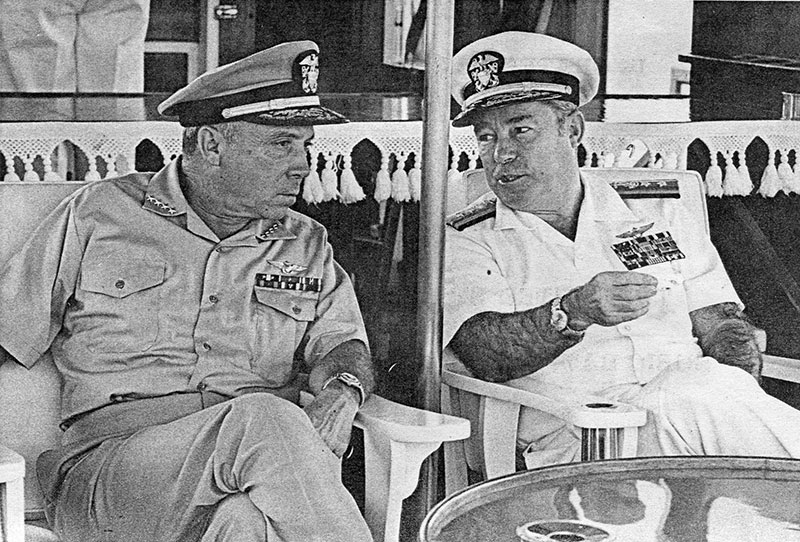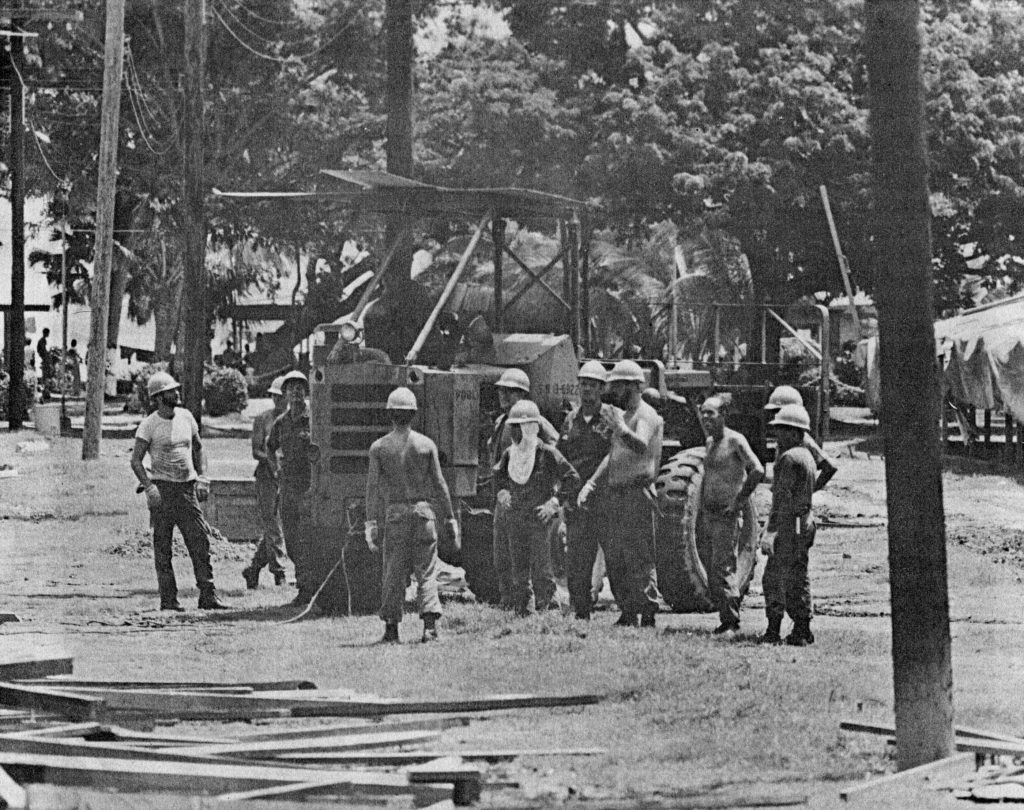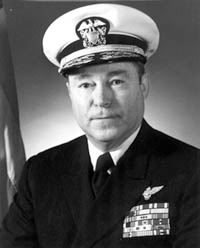EDITOR’S NOTE: Grand Island was operated for many decades after WW II by Subic Bay US Navy Special Services as an on base resort for US Military and Civilians stationed throughout the Philippines. It was accessible via a small landing craft type boat shuttle service at the pier adjacent to the Alava Carrier Pier in front of the HQ building at Naval Station Subic Bay. During Operation New Life, in 1975, thousands of Vietnamese refugees were sheltered and processed on Grande Island after the fall of Vietnam to North Vietnam. After that rescue mission, which lasted about six months, Grande Island was rehabilitated and was restored to its Special Services resort configuration until 1991. At that time the lease on US military bases expired, and the US bases were closed about the same time they were damaged by the eruption of Mount Pinatubo volcano. Grande Island was restored as a resort after repairs following damage from the Mount Pinatubo volcano eruption. It was restored by the civilian Philippine Subic Bay Free Port Zone Authority following the closure of the Subic Naval Base in 1992.
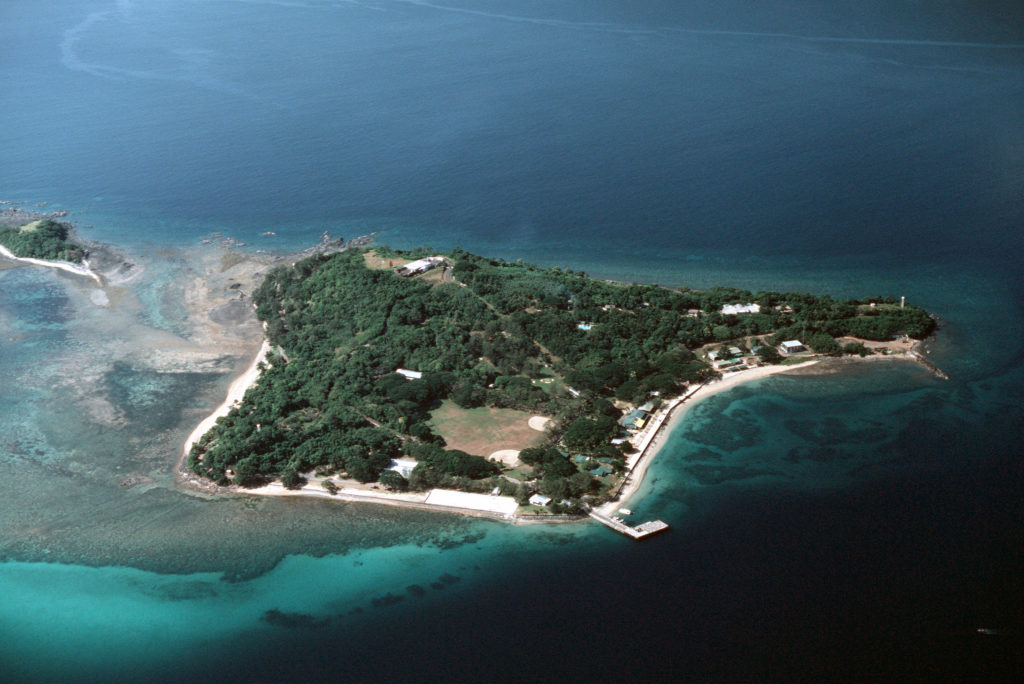
Grande Island
When Vietnam fell in 1975, thousands of ‘boat people’ fled to the seas and many ended up on Grande Island. The following pictorial and associated text was taken from a base published book entitled “XIN CHU-Y, XIN CHU-Y” which is a Vietnamese term pronounced Sin-Chew-Yee, and meaning “Attention, Attention.” This book was dedicated to the forty three thousand South Vietnamese and Cambodian refugees who responded daily to that call.
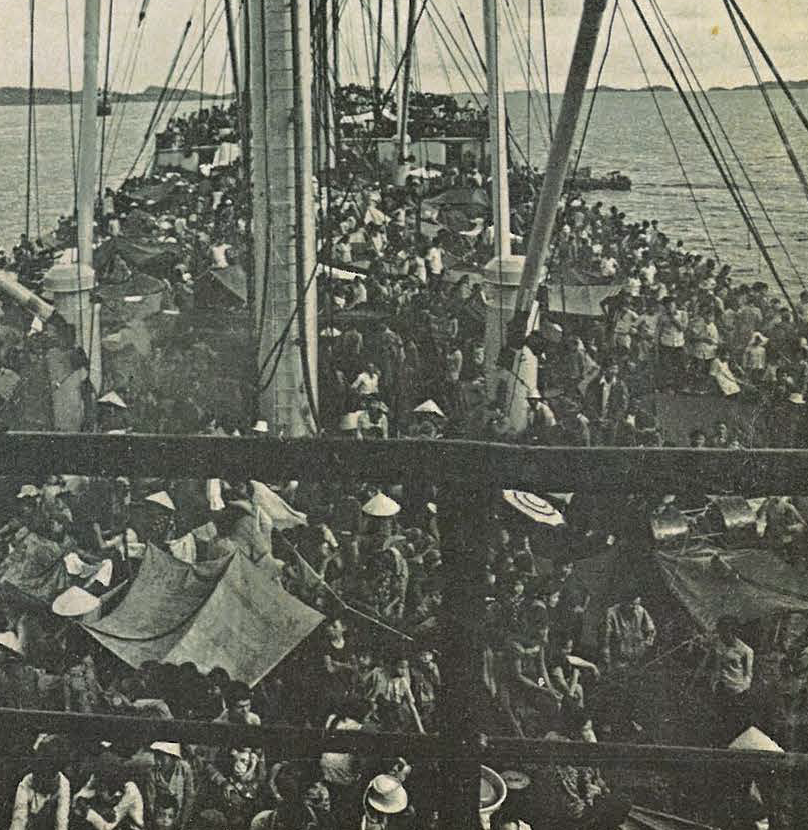
From the first day of operation, camp life on Grande Island was characterized by the incessant call of the South Vietnamese interpreters on the public address system, “Xin-Chu-Y, Xin-Chu-Y…”, which preceded every announcement. Announcements calling the camp to meals, seeking assistance for lost children. Announcements to find friends and family during periods when broken families were arriving by different means.
They came to Grande Island enroute to a new life. Some moved on quickly, others stayed to call it home. But they all earned our admiration for their courage, their patience, their hope and faith. This book is a brief chronicle of the time the refugees spent with us on Grande Island, and carries with it the best wishes of all of us in Subic Bay for success and happiness in their new life.
The refugees are gone from Grande Island now. Gone on to better places and better things. The hotel is empty, the tents are down, there are no small boys chasing and the public address system is still.
They came to us, stayed briefly, touched our lives and now they are gone. But in the quiet of the evening, when the sun has just dropped below the western mountains of Subic Bay, and the sky is still pink, and the onshore breeze gently moves the palm fronds on Grande Island, you can sometimes hear the silent voices of 43,000 departed friends…and the muted cry… ” …XIN CH U – Y, XIN CHU- Y!”
REFUGEE COORDINATOR FOR
OPERATION NEW LIFE IN SUBIC BAY
REAR ADMIRAL D. B. SHELTON, USN
CINCPACREP PHIL /COMUSNAVPHIL
COMNAVBASE SUBIC
Grande Island is a beautiful tropical isle located at the entrance to Subic Bay wherein lies the United States Naval Base with its associate commands. Formerly a forty five man coastal defense outpost named Fort Wint, which dates from 1905, Grande Island was converted after World War II into a recreation area specifically for fleet use. The emerald green waters invite the sailors to enjoy aquatic activities of all kinds including snorkeling and scuba diving. Additionally, facilities supporting picnicking, softball, golf, horseshoes, tennis, fishing, etc. are available, plus cottages and a small hotel capable of accommodating approximately 200 people. This island was chosen as a site to support the Vietnamese and Cambodian refugees enroute to the United States.
GETTING READY
With scant notice, hundreds of. Seabees; Navy and Marine Corps personnel, civilian. workers and volunteers descended on tiny Grande Island to transform a recreation center into a temporary home for between 1,000 and 5,000 expected evacuees. Landing craft churned the waters of. Subic Bay .twenty four hours a day, delivering building materials, vehicles, office supplies:..tons of hardware required to establish a refugee camp…mattresses, bed. linens; enough for a small city.
The initial task was to convert the .island to facilities which could handle 5,000 refugees. It was then expanded to accommodate 10,000. and, during the peak of operations, would process and care for over 14,000 refugees.in a single day.
The resources of the entire Subic Bay Naval Complex and its tenant commands were brought to bear on this task. They provided not only cover and bedding, but all those facilities needed to properly support the guests. The golf course and softball fields provided ideal sites for the erection of tents which were made from materials available or flown’ in from OkinaWa. From the very beginning, it was an “All-Hands” project.
ARRIVAL
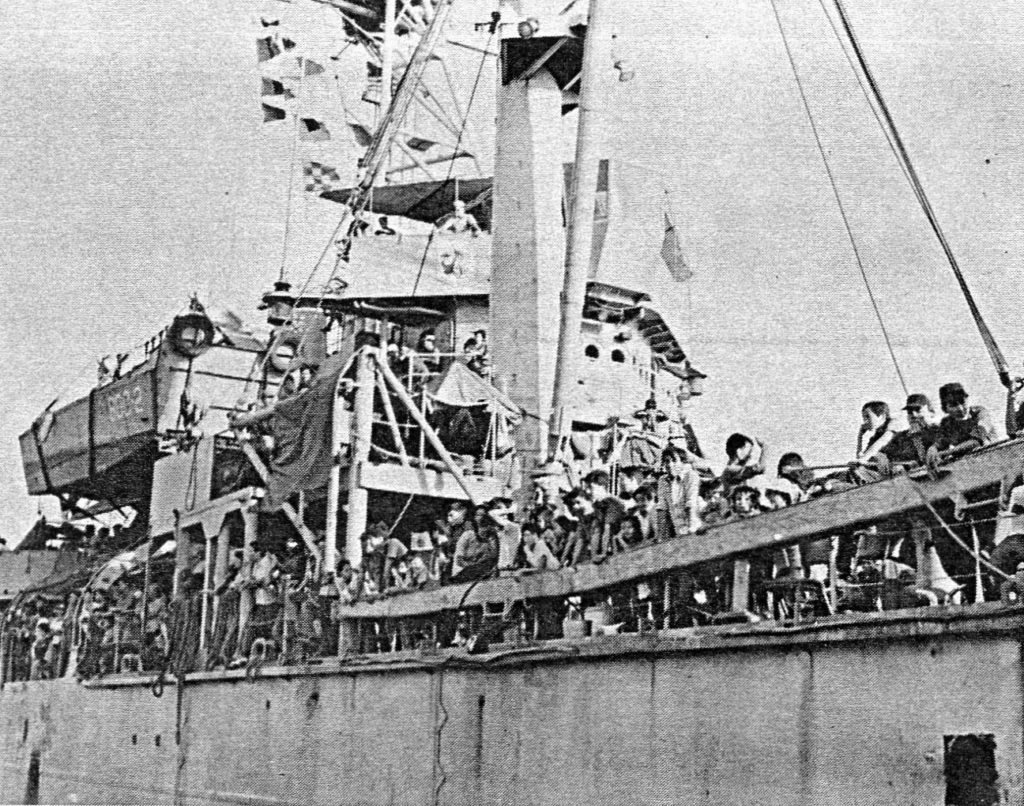
Initially, refugees arrive by airplane on April 26 from Saigon, landing at the Naval Air Station, Cubi Point and ferried to the island by small craft. Later the refugees were to arrive by ships including United States Naval Vessels, Military Sealift Command Ships and former South Vietnamese and.Cambodian Naval Vessels. Small craft of all types were used in moving refugees to the island and, during the peak of operations, ships of the Military Sealift Command and, MSC Contract Vessels were moored directly to the island’s small pier for off-loading.
Finally, one by one and in small convoys, small merchantmen and fishing boats begans to arrive as the last.to escape from their fallen homeland successfully crossed the eight hundred miles of open sea to the safety of the island.
Working parties from local commands and units of the Seventh.Fleet manned the pier day and night to assist the refugees onto the island.
IN-PROCESSING
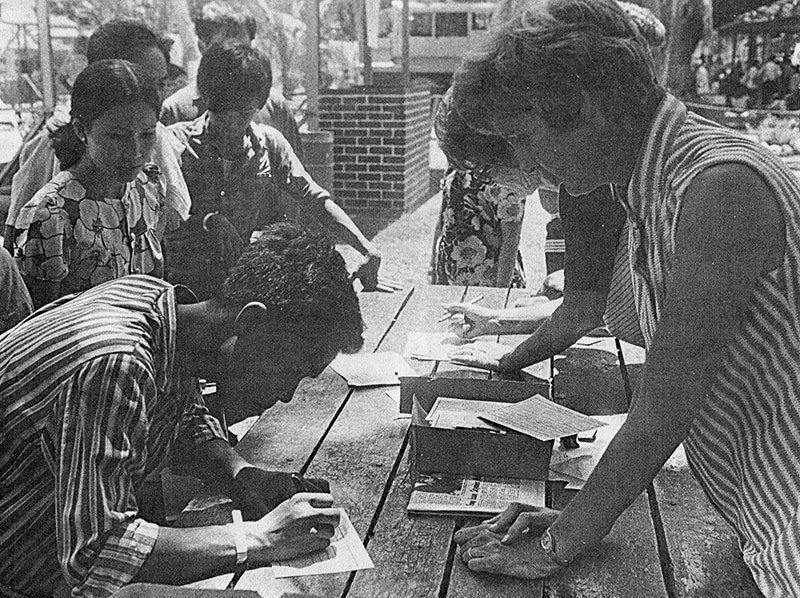
During the period that the refugee camp was in operation, 43,000 Cambodian and South Vietnamese refugees were received on the island. Initial in-processing included the following steps:
- Medical Care and initial issue of food, beverages, diapers, baby formula, etc. by volunteer women.
- A search by United States customs inspectors.
- Issue of a numbered hospital bracelet for identification and to serve the camp’s “First In, First Out” policy.
- Serving of a hot meal.
- Completion of a short information card for data processing use.
- Billeting in the camp or immediate manifesting on an outgoing flight.
In-processing continued in an around-the-clock operation which handled as many as 8,000 arrivals in a twenty four hour period while simultaneously manifesting more than 6,000 out for onward movement to Guam and the United States.
CAMP LIFE
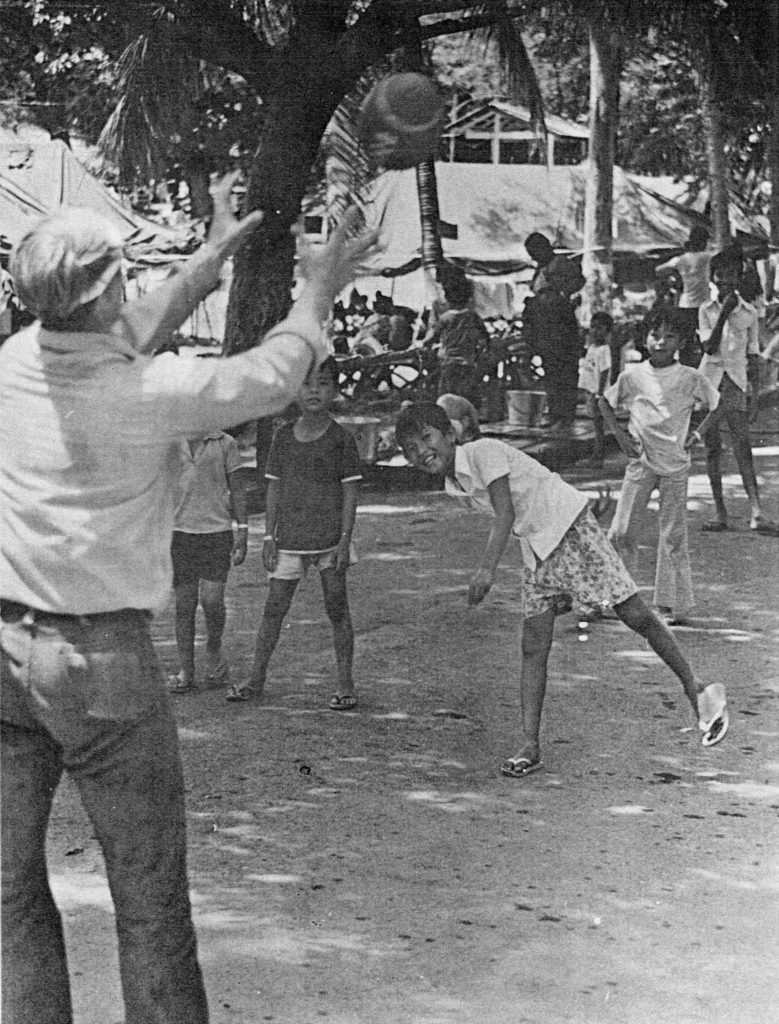
The life at Grande Island was as varied as the existence the refugees had left behind. Refugee working parties assisted with the daily maintenance of the camp; English classes and courses of orientation to life in the United States were organized by representatives of the United States Aid to International Development (USAID) program and were studiously attended; recreational pastimes were pursued during every waking moment. Athletic equipment issued by the Special Services Department was utilized by young and old, resulting in organized tournaments which saw visiting teams from George Dewey High School and the Underwater Demolition Team at Subic defeated in volleyball by “All-Star“ teams of South Vietnamese and Cambodian refugees.
Newspapers were distributed daily to the refugees and they began to publish daily newsletters in their own language. More and more, functions of camp operation formerly handled by Americans were assimilated into the schedule of the refugee workers. Regular meetings between the camp command and the refugee leadership helped to iron out minor problems.
Throughout the tenure of the camp‘s operation, the refugees earned the admiration and respect of their hosts for their patience as they awaited transportation on to the United States. The pictures tell the story.
The refugees found many diversions to occupy non-working hours. Nightly movies were shown at various locations throughout the camp. Religious services were held regularly. From time to time, volunteer troupes of entertainers ventured to the island bringing a variety of presentations ranging from demonstrations of martial arts to a show produced by the students of George Dewey High School. Programs of Philippine Cultural Entertainment were provided for the refugees enjoyment through the efforts of Olongapo City’s Mayor, the Honorable Geronimo B. Lipumano.
On the evening of June 30, 1975, a delegation of camp personnel, headed by Rear Admiral D. B. Shelton, Commander Naval Base Subic, and their wives were invited to a dinner and show organized and presented by the remaining 2,000 refugees on Grande Island.
A delicious meal, prepared in its entirety by refugee ladies was enjoyed as the refugees sang and danced their memories. Hand-drawn portraits of the Admiral, Refugee Director and Camp Commander were presented. Another honored guest, Olongapo City Mayor, Geronimo B. Lipumano received a full-color rendering of Grande Island in appreciation of his efforts towards increased understanding between the refugees and the people of the Philippines.
A warm, touching manner of expressing their gratitude, this evening proved more than adequate thanks.
DEPARTURE
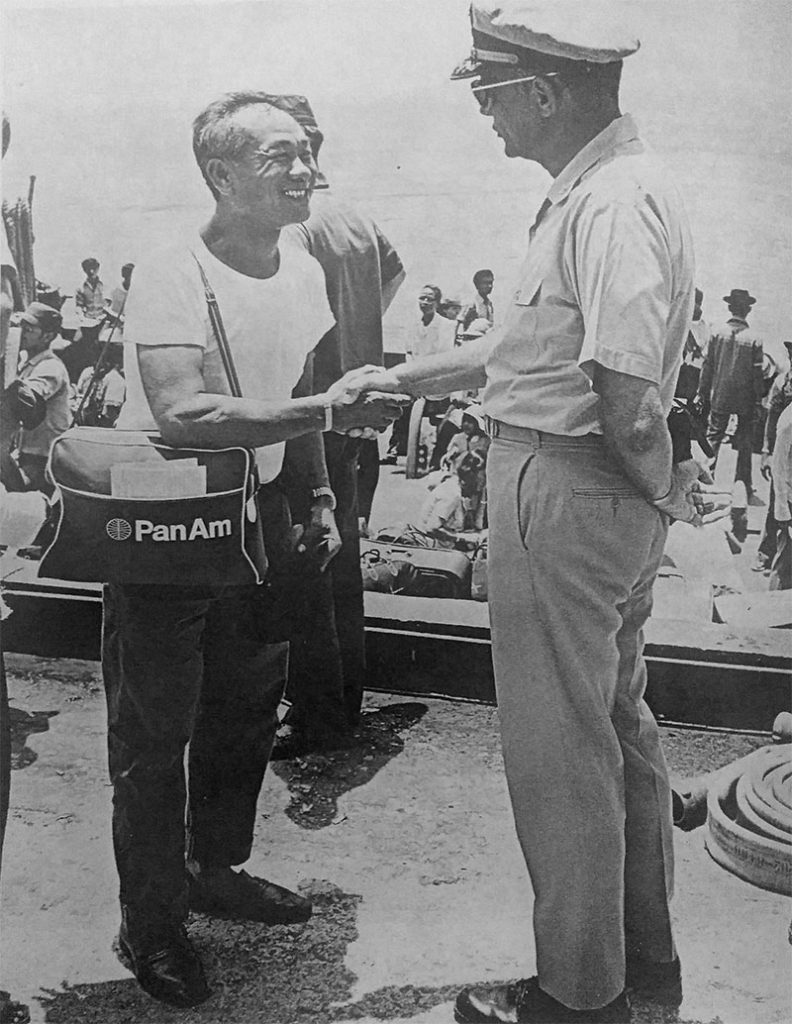
The last, “Goodbye.”
Almost from the beginning, refugees were departing Grande Island regularly. On the morning of April 27, less than 24 hours after the first arrivals, a group of 23 orphans left Grande Island for Cubi Point where they boarded a flight taking them direct to the United States and their new homes.
During the height of the operation, aircraft flew from Cubi Point every thirty minutes carrying refugees to Guam and Wake Island. In one. twenty four hour period, 6,385 men, women and children were out-processed, manifested and transported to the Naval Air Station to take the next step in their journey to a new life.
The basic policy of the camp was “First In, First Out”, with two exceptions. One was that family units would not be divided and the other provided that the refugees could remain in the camp if they desired in order to rest or to attempt to locate relative or friends. Nevertheless, the overriding interest in the camp was the schedule of planes departing for Wake or Guam, their next stop in the refugee pipeline.
On July 5, l975 the last group of 125 refugees were manifested, checked out and boarded a tugboat bound for Cub Point and their aircraft., As the tug grew smaller in the afternoon sunshine, the Grande Island refugee camp ceased to exist and slipped into history.
About RADM Doniphan B. Shelton,
U.S. Navy (Ret.)
Following boyhood in Missouri, Shelton entered the Navy in 1939 as an enlisted man. He served in the battleships New Mexico (BB-40) and California (BB-44) before attending prep school and then the Naval Academy, from which he graduated in 1944. He had wartime duty in the light cruiser St. Louis (CL-49) before completing flight training. He was among the Navy’s pioneers in night fighter operations and later served as a test pilot. Squadrons over the years included VF-1E, VCN-1, VC-3, and VC-124. He commanded Fighter Squadron 92 and Carrier Air Wing 17; the latter was in the Ranger (CVA-61). He had a role in the introduction of the F7U Cutlass into the fleet. His ship commands during the Vietnam War were the ammunition ship Paricutin (AE-18) and the amphibious assault ship Tripoli (LPH-10). He attended the Naval War College and had several tours of duty on the OpNav staff. Included in the latter was work in the Politico-Military Policy Division, particularly in connection with Pan-American affairs. In 1973-75 he commanded U.S. Naval Forces Philippines and later served as director for plans (J-5) on the CinCPac staff before retiring in 1979.
His tour in the Philippines was noteworthy because of the hosting of South Vietnamese refugees at Subic Bay after their country was overrun in the spring of 1975.

